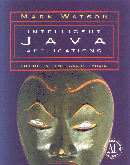
Optativa de 5è curs
| 1r quadrimestre
Teoria : Dimarts 19:00-21:00h Pràctiques : Dilluns 19:00-21:00, Lab. TAP / Aula d’Informàtica). Professor: Josep Lluís de la Rosa Proposta Aula Informàtica : Aula CC5 (Aula PCs amb o sense LINUX). 3 Crèdits Teoria + 3 Crèdits Pràctiques. ( 1.5 Crèdits = 1 h/setmana) |
Setmana 1
Concepte. Evolució històrica. Camps d’aplicació. Exemples.
Tema 2: Enfoc pràctic de la lògica fuzzy (difusa) (4h)
Setmanes 1 i 2
Tema 3: Enfoc pràctic de les xarxes neuronals (4h)
Setmanes 3 i 4
Tema 4: Algorismes genètics (6h)
Tema 5: Enfoc pràctic dels sistemes experts (6h)
Setmanes 5, 6 i 7
Material:Jess 4.1b3
Setmanes 3 i 4 (4h):
Setmana 5 (2h):
Setmana 6 (2h):
Setmana 7 (2h):
Setmana 8 (2h):
Setmana 9 i 10 (4h):
Setmana 11 (2h):
Setmanes 12, 13,14, 15 i 16
(16h): (Aquí ja fem pràctiques tota la setmana cada setmana)
Bibliografia
Algorismes del llibre:
Neural
Genetics
Jess
http://www.robocup.org/research/52.html
http://www.cs.cmu.edu/afs/cs.cmu.edu/user/pstone/mosaic/pstone-papers.html

Internet tools and applications frequently use artificial intelligence (AI) techniques to enable special features and reduce development time. This book allows you to apply these powerful AI design techniques to your Java programming. Focusing on intelligent systems, it provides the introductory AI material that Java programmers need to create Internet and Intranet applications including on-line games, search tools, and data collection tools. A variety of detailed examples are provided to illustrate how these applications are used in real-world software projects, and to guide you in developing applications of your own.
•AI concepts are explained in detail making the book accessible to any Java programmer. •An accompanying CD-ROM lets readers experiment with source code for the Java classes developed in the book. The CD-ROM includes many immediately useful Java class libraries and four complete applications that use the Java class libraries. •Complete example programs cover a range of applications including an arcade style game, a handwriting recognition system, a system that answers questions about ancient history, and an information retrieval application.
Authors:
Mark Watson is an independent software developer with extensive software engineering experience. He has worked at Angel Studios as a game programmer for Nintendo and Windows 95 games, with SAIC on the development of tools for expert systems, and on natural language processing and neural network systems. He is the developer of a real-time distributed expert system used by regional telephone systems to detect fraud, and is the author of eight books.
Table of Contents:
! Introduction to Artificial Intelligence
2 Java User Interface Framework for Testing AI programs
3 Distributed AI
4 Neural Networks
5 Genetic Algorithms
6 Natural Language Processing
7 AI Agents
8 Expert Systems
9 Using Genetic Algorithms in a Scrolling Arcade Game
10 Neural Network for Real-Time Handwriting Recognition
11 Using a Greedy Algorithm to Optimize Neural Networks
12 Optimizing Neural Networks with Genetic Algorithms
13 Supporting Natural Language Queries in a World Wide Web Document
14 Using Java-Based Data Collection Agents
Appendix A Introduction to Java Programming
Appendix B Using the CD-ROM
Appendix C Javadoc Documentation